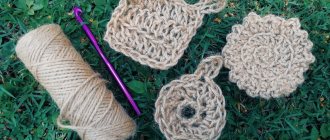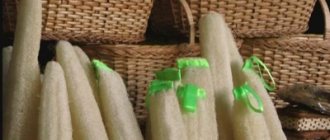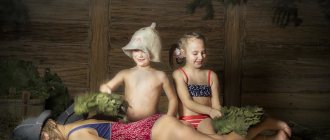The bathhouse is an excellent place not only to relax, but also to improve your health, because its benefits and healing effects have been proven over time. But is it possible to visit the bathhouse with children? What does it do for the child’s body - harm or benefit? Here, of course, everything is individual, but medical studies have shown that with a reasonable approach, bath procedures for children are just as beneficial as for adults.
You can refuse to go to the bathhouse if there are a number of direct contraindications, such as:
- diseases of the dermatological, heart, thyroid, kidney and respiratory system;
- colds accompanied by fever and cough;
- nosebleeds;
- recovery period after surgery;
- blood pressure surges;
- bleeding disorders.
The benefits of a bath for a child
If the child does not have such health problems, then the bath, on the contrary, will benefit him. In addition, regular visits to the bathhouse have a positive effect on the child’s body:
- strengthens the immune system and strengthens the body;
- helps improve overall well-being;
- promotes speedy recovery after bronchitis and pneumonia;
- relieves frequent colds and chronic nasopharyngeal diseases;
- balances the emotional state;
- trains blood vessels, etc.
A bathhouse can become a therapeutic remedy for a baby
Like an adult, a child can benefit from visiting a bath not only in the long term, but also immediately. The steam room will help cure:
- Cold;
- Bronchitis;
- ARVI;
- Runny nose;
- Pharyngitis and laryngitis.
And vice versa: children who suffer from fever or breathing problems (with adenoids, pneumonia) may experience serious discomfort. In this case, visiting the steam room, like any other hardening water procedures, is better to postpone until a more favorable time.
At what age can children go to the sauna?
Since the bathhouse is so useful for both adults and children, at what age can you visit it? Some argue that if a mother visited a bathhouse and sauna during pregnancy, tempered herself and doused herself with cold water, then the child is ready for a bathhouse from the age of 3 months. Someone says that you can take your baby into the bathhouse for 1-2 minutes from 8 months. Others advise waiting until 3 years. Who to believe and what to do?
In general, up to 1.5 years of age, children only develop sweat glands and thermoregulation. Therefore, young children may react negatively to high temperatures and quickly overheat. It’s better to start hardening your children from infancy with the help of air baths and wet rubdowns, and from the age of 3 you can safely take your baby with you to the bathhouse.
But it is better to limit the time you visit the steam room to a few minutes, and the air temperature there should not be too high. After warming up the baby’s hands and feet, you can pour cool water over them, and then continue hygiene procedures in the washroom or shower.
Get ready for the sauna!
Parents should take a responsible approach to introducing bath procedures into their child’s life. It is very important to prepare it correctly, as well as choose the most appropriate moment for this.
Basic rules for introducing children to the sauna:
- During the first visits, do not overdo it with the temperature. It should not exceed 70 degrees. The warmest procedures should be brief. You should not enter the steam room more than three times at a time, and each session should not exceed two minutes.
- In the steam room itself, it is better to place children on the lower benches. It is recommended to hold infants in your arms.
- It is better not to immerse children who are not yet familiar with hardening into the pool and do not pour too cold water on them.
- You should never leave children unattended in a steam room. It is very important to carefully monitor the baby's condition. If changes are noticed in his behavior, it is better to postpone the bath procedures and continue acquaintance a little later.
- Before visiting the bathhouse, you should buy rubber slippers (if your baby is walking), a hat and a terry robe. Rubber toys will also come in handy to help entertain the baby.
- If your baby categorically refuses to go to the sauna, you should not force him. These procedures should bring joy and positive emotions.
- It is recommended to coordinate your first trips to the sauna with your pediatrician. There are a number of contraindications: chronic diseases of the genitourinary system, liver, gastrointestinal tract, skin diseases, endocrine disorders, inflammatory processes. Children with allergies and those suffering from vegetative-vascular dystonia should postpone visiting the bathhouse. If your baby becomes ill in the steam room, he should be taken out of it immediately and shown to a doctor.
- Bath procedures strengthen the body, but do not cure it of the flu or any infectious diseases. If your baby is sick, it is better to reschedule your trip to the sauna to a more appropriate time.
- It is recommended to go to the sauna with your child no more than once a week. Kids quickly get used to it, because they love to copy the behavior of adults. It’s better if it’s the same day of the week, so the kids get used to this pleasant and useful tradition faster.
- Be positive. Every child perfectly feels the emotional state of their parents. If they are worried and nervous, this will be passed on to the baby.
All procedures must be gentle. You should avoid beating with a broom, even lightly. Children's skin is very delicate and can be damaged, especially after it has steamed. At first, you should reduce the time you spend in the sauna, avoid steam bursts, and avoid severe overheating and hypothermia. After the sauna, little visitors should be given something to drink and, if desired, fed.
It is recommended to take a long break between each visit to the steam room to help children adapt to the climatic conditions of the steam room. Offer some kind of “bath drink”: fruit drink, herbal tea or uzvar.
In any case, each child is an individual. No one will ever be able to predict how a baby will behave in a sauna until he tries it. Therefore, parents need to decide at what age to introduce their baby to the bathhouse, after weighing all the pros and cons.
Can children take a steam bath?
You can steam a child with a broom from the age of 5 years. But if the child is categorically against it, you should not insist on the procedure. In any case, even just being in the steam room will have a positive effect on the child’s health - the aroma of steamed brooms and herbs acts like inhalation.
If your child doesn’t mind taking a steam bath, then choose a broom with soft soft leaves, for example, birch or linden. First, rinse the broom, then steam it in hot water, and thoroughly shake off excess moisture before use.
Do not steam your child too intensely; use the broom delicately. Pay special attention to the legs and arms, and it’s better to just gently stroke the back and stomach with a broom.
Contraindications
There are cases when going to a bathhouse or sauna with a child is prohibited. “Absolute contraindications are: pathologies of the heart muscle, diseases of the urinary system in severe chronic form, disorders of blood pressure and blood flow (blood clotting), allergies and asthma, tumors, diseases of the endocrine system, gastrointestinal tract, eyes in acute and chronic form,” says our expert . “You should also refrain from health procedures during the recovery period after operations, with frequent nosebleeds, skin infections and problems with the nervous system that cause convulsions.” According to Ekaterina Karedina, children with any diseases in the acute stage, children suffering from psychopathy and epilepsy, rheumatoid pathology, and tuberculosis should not visit the bathhouse. Such procedures are not recommended during periods of exacerbation of any infectious diseases, including during acute respiratory infections.
Rules for children visiting the bathhouse
The special microclimate of the bathhouse and sauna can have both a healing effect and cause harm to the child’s body if some rules of behavior in the bathhouse are neglected:
- Be sure to put a bath cap and non-slip shoes on your baby's head (on dry hair).
- In the steam room, the child should be on the lower shelves and for no more than a few minutes.
- The air temperature in the steam room for children 2-3 years old should be 50-60 degrees, for 4-7 years old - 65 degrees, from 12 years old and older - 70 degrees.
- Before and after visiting the steam room, you should not feed your baby too much. A light snack (fruit, yogurt, etc.) is enough.
- It is better to restore the water balance with mineral water, fruit drinks or weak tea.
How to combine the incompatible: a bath with a child and your own pleasure
If a mother devotes herself completely to her baby, this is commendable.
But don't completely forget about yourself. Women's health resources are not unlimited, even if they are spent for good purposes. They need to be replenished. This means that in the bathhouse you should not only hover around your baby like an eagle hovering over an eaglet, but also personally receive the benefits and pleasure from soaring.
Come to Shuvalovskoye Compound
The cottage and bath complex “Shuvalovskoe Podvorye”
in St. Petersburg offers cottages with steam rooms for rent to families and large companies. Here you can spend from 3 hours to several days. You can enter the steam room one by one:
- While it is not yet warmed up, mothers and children go;
- Then – dads taste the real heat;
- Then mothers recover their nerves while fathers look after their sleeping babies.
Our cottages are spacious and can accommodate up to 20 or more people.
The upper floor has cozy bedrooms. Older children can spend time on the playground under the supervision of an animator, while adults are busy with themselves - relaxing in a mode that is comfortable for them. Visitors are served by professional bath attendants and massage therapists.
What to do if your child overheats
The most important thing for parents is not to leave their children in the bathhouse unattended, and to constantly monitor their appearance and well-being. Bathing procedures must be stopped immediately if you notice at least one of the following signs:
- the child’s face suddenly turns pale or red;
- the baby’s nasolabial triangle has acquired a bluish tint;
- the child’s arms and legs became cold;
- the child has nausea or vomiting;
- the baby becomes lethargic or complains of dizziness.
All these changes indicate overheating of the body, so in such cases it is important to promptly take the baby out into the fresh air or into a cool room, put a cold compress from a damp towel on his forehead, pour cold water on his arms and legs, provide the child with peace and, if necessary, seek help to the pediatrician.
To prevent possible injury, do not allow children to:
- run and jump, because the floor may be slippery;
- independently open taps with hot and cold water;
- climb onto high shelves;
- turn on heating devices;
- open windows and doors to the room.
If you follow all these rules, the bathhouse will only benefit your children. And the ideal place to go to a Russian bathhouse with children in Lipetsk is the Vereshchaginskaya Bathhouse, which will appeal to both adults and children! It's clean, safe and fun.
Violation of the regime
The following are considered violations of the treatment regimen and internal regulations:
- Smoking in the premises and on the territory of the hospital, drinking alcoholic beverages;
- Use of heating and other electrical appliances in department wards;
- Failure to comply with doctor’s recommendations, taking medications at your own discretion, storing them in the ward;
- Failure to appear or late attendance at a doctor's appointment or procedure;
- Failure to comply with the requirements of medical personnel when performing various procedures;
- Unauthorized departure from the department without notifying medical personnel and permission from the head of the department;
- Rude and disrespectful attitude towards staff and other patients;
- Failure to comply with the sanitary-epidemiological and security regime.
If the regime and internal regulations are violated, the person caring for the child may be discharged from the hospital. In this case, a note about violation of the regime will be included in the certificate of incapacity for child care. The territorial health authority that referred you for treatment will also be informed.
Infrared sauna for children
An infrared sauna is a small room or cabin equipped with heaters that emit heat waves up to 15 microns in length. They penetrate the skin to a depth of no more than 4 cm, gently affecting it, muscles and joints. Unlike convection devices, IR heaters emit heat in waves, making it more efficient. Heat is absorbed by specific organs and tissues, and radiation is not wasted.
With regular visits, infrared cabins will help your child:
- increase immunity;
- normalize pressure in arteries and veins;
- prevent the development of diseases accompanied by cough, runny nose, complications of the bronchi and lungs;
- alleviate allergy symptoms;
- fight excess weight;
- recover after active sports;
- cope with scoliosis in the early stages.
Lamps that emit infrared radiation are safe to use because they are equipped with protective grilles or a special surface. They work almost silently, so the child can relax and not worry during the session. The devices consume a small amount of electricity and are designed for long-term use.
One-, two-, three-seat infrared saunas are made of natural wood - cedar, Siberian pine, alder, aspen and linden. These materials not only have a beautiful texture and strength, but also have a lot of useful properties.
Classification of the disease
There are four main types of miliaria, which differ in the nature of the rash, the duration of development and the severity of symptoms:
- Crystalline. It is accompanied by the development of a blistering rash, which most often appears on the head, behind the ears, and on the neck. Other localization of rashes is also possible. 2-3 days after the appearance, the blisters dry out and begin to peel off. Since irritation is not accompanied by inflammation or infection, the crystalline form is the simplest and most harmless.
- Red. A more complex type, in which sweat acts on the skin for a longer time and, accordingly, causes more severe irritation. A rash in the form of small inflamed tubercles provokes slight swelling and is accompanied by itching, burning, and discomfort. Lasts about two weeks.
- Miliaria alba, or vesiculopustulosis. With this type, blisters with a whitish or yellowish filling appear on the skin. When the bubble bursts, it leaves behind a light coating. The presence of color in the bubbly fluid indicates that the rash is accompanied by an infection, often staphylococcal.
- Deep. In most cases, prickly heat causes only superficial damage to the skin. With a deep form of pathology, the deep layers of the skin are affected. The disease is accompanied by blisters filled with light contents, which resolve or burst spontaneously.
Your child has microsporia
To children, the world can seem like one big playground full of adventure. But their desire to play in the ground, pet animals, touch other people's things can lead to infection with various infectious and parasitic skin diseases. Children are especially susceptible to this because their immune systems are not yet fully developed. Summer, holidays, children's holidays in camps, outside the city, lead to a seasonal rise in these diseases. Currently, one of the common skin infections is microsporia. Microsporia affects mainly children of preschool and school age, less often adults. Microsporia is caused by a fungus that gets on children's skin called Microsporum. The fungus is very stable in the external environment. In hair, skin flakes, wool, dust, it retains the ability to infect for several years.
How can your child become infected?
Infection occurs through direct contact with a sick animal (cats, kittens, less often dogs), or objects infected with hair or scales (combs, hats). It is possible to transmit microsporia from sick family members, but this happens less frequently. There have been cases of children becoming infected after playing in the sandbox. However, if you follow the rules of personal hygiene, even if the pathogen spores come into contact with the skin, the disease can be avoided.
How does the disease manifest in a child?
After an incubation period of 5-7 days on average, foci of infection appear on smooth skin or scalp. Microsporia can appear on any part of the skin, but more often on exposed parts of the body. In mild forms of the disease, round lesions form on the skin, clearly defined, covered with scaly nodules and blisters along the periphery. They often form bizarre shapes, like a “ring within a ring”. At the same time, vellus hair may be affected, which complicates the treatment of the disease. The number of lesions ranges from single to several dozen. Size from 0.5 to 3 cm. When the scalp is affected, 1-2 large lesions are formed, round in shape, with clear boundaries and abundant pityriasis-like peeling. The hair breaks off at a height of 6-8 mm above the skin level (hence the name of the disease - ringworm), because the hair in the lesion appears to be trimmed. There may be slight itching in the affected area. The general condition of children is usually not disturbed. With a decrease in immunity, a child may experience complicated forms of microsporia - infiltrative and suppurative forms. The infiltrative form is characterized by the development of severe inflammation in the lesion. The suppurative form is characterized by the formation of dense foci, round in shape, consisting of deep abscesses (cavities filled with pus). Nearby lymph nodes increase in size. The child's general condition may worsen and the temperature may rise. If a child has suffered microsporia in a mild form, then no traces of the disease remain on the skin or scalp. After a complicated form of microsporia, scars may remain on the skin, and focal baldness may remain on the scalp.
Before treatment, visit a doctor.
If a suspicious rash appears on a child’s skin or scalp, consult a dermatologist without first lubricating the affected areas, as this may complicate diagnosis. Correct diagnosis is half the success in treatment. Skin lesions with microsporia can be confused with other types of lichen, psoriasis, eczema, and hair loss may not be caused by a fungal infection. The diagnosis of microsporia is established on the basis of external signs and must be confirmed by microscopic examination and isolation of the pathogen (growing on a nutrient medium). An important diagnostic criterion will be the greenish glow of the affected hair in the rays of an ultraviolet quartz lamp. A similar study is also used in veterinary medicine, so if you have any doubts about the health of your furry pet, take him to the doctor too, but to a veterinarian. As in children, ringworm in pets (dogs, cats, etc.) can appear as patches of hair loss and skin inflammation. However, many animals infected with microsporia have no symptoms and appear completely healthy and safe. This phenomenon is called colonization.
How to cure microsporia or ringworm in a child?
If the doctor confirms that your child has microsporia, he will be able to prescribe you the correct treatment, without which the disease can take a very long time to develop, can cause complications and can spread to other people. Uncomplicated, single lesions on the skin, without damage to vellus hair, can be treated on an outpatient basis, using only external antifungal agents. During treatment, you should not bathe your child in the bath; wash only in the shower, trying to avoid areas with rashes and using antifungal shampoo for washing. Be sure to provide your child with individual bath and bedding items, and iron clothes with a hot iron after washing. Disinfect all toys with an available antiseptic or boiling water.
Numerous foci of microsporia on smooth skin, with damage to vellus hair, damage to the scalp, and complicated forms are an indication for treating a child in a hospital. In addition to external therapy, systemic antifungal drugs are used for treatment. The dose and frequency of taking systemic antimycotics is prescribed by the doctor, taking into account the child’s weight, his general condition, and the manifestations of the disease. How do you know if treatment for ringworm is helping?
In order to determine how the treatment is going, it is necessary to take control tests from the lesions for fungi.
If the tests show that there are no living fungi in the scrapings, this will mean that the treatment was effective.
Typically, the number of fungal spores in the skin and hair is significantly reduced 2 weeks after the start of treatment. The complete disappearance of fungi occurs later. Sometimes, despite active treatment, the release of fungal spores can continue for several months.
If tests show that, despite treatment, fungi are still present in the skin tissues, the doctor may advise either prolonging treatment, prescribing you other antifungal medications, or increasing the dosage of the drug.
Is there any other way to quickly cure ringworm?
Unfortunately, there are no faster and easier methods for treating ringworm.
Can ringworm go away without treatment?
There are cases when ringworm went away on its own. However, more often than not, it does not go away without treatment and spreads to other areas of the skin.
In a child with ringworm, if left untreated, the disease may persist into adulthood.
Can ringworm reoccur?
The human body is not able to develop immunity against the fungi that cause ringworm, so both adults and children can develop the disease again if they become infected with the fungi again.
Ringworm can also recur if treatment is not completed and if viable fungal spores remain in the skin tissue and hair.
Is there a (vaccine) shot for ringworm?
Unfortunately, an effective vaccine against ringworm in humans has not yet been developed.
Carefully following your doctor’s recommendations will help you quickly cope with the disease, and following preventive measures will prevent infection.
How to prevent infection with microsporia?
Considering that the main source of microsporia infection are stray animals, parents, and caregivers. teachers should explain to children that they should not pet or play with stray cats and dogs. To prevent microsporia, you must follow the following rules:
Keep children's hands, body, and hair clean. Do not allow children to wear other people's things, hats, or use other people's combs. Make sure that children wash their hands thoroughly after playing outside, after contact with pets, especially if they are walking outside, and do not take them to bed. Under no circumstances should you play with homeless animals. If you decide to bring a cat or dog into your home, you should definitely check them with a veterinarian. Do not throw sick cats and dogs outside. This contributes to the spread of the disease among animals and can become a source of infection for children. Be carefull.
Diagnostics
You should not self-medicate or try to diagnose your child yourself. Before you begin to treat prickly heat in a child, when the first rash appears, you should contact a pediatric dermatologist or pediatrician. The specialist will conduct an examination and distinguish the pathology from other diseases that are accompanied by a skin rash. For an experienced pediatric specialist, this is not difficult even with an initial visual examination.
In some cases, additional examination is necessary for a comprehensive diagnosis. The doctor may prescribe scraping for pathogenic fungal infections, as well as bacterial culture for microflora.











